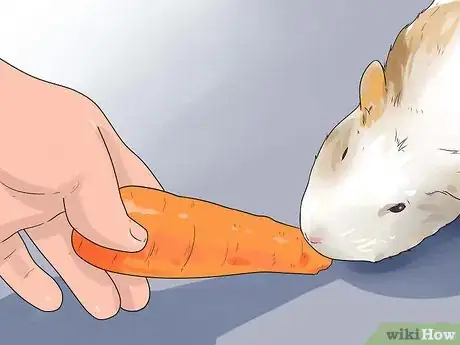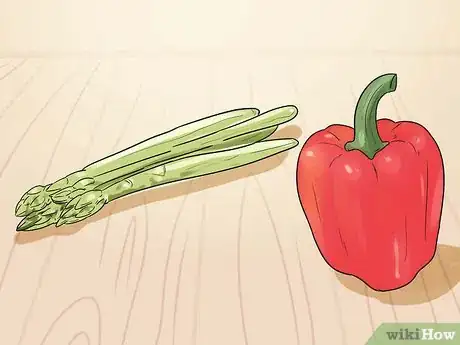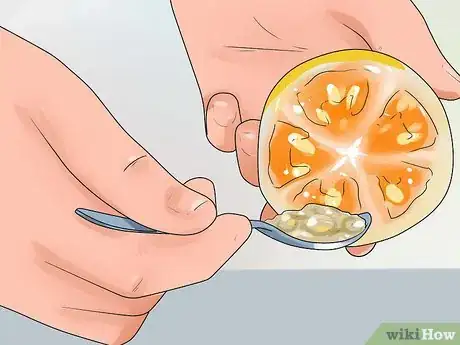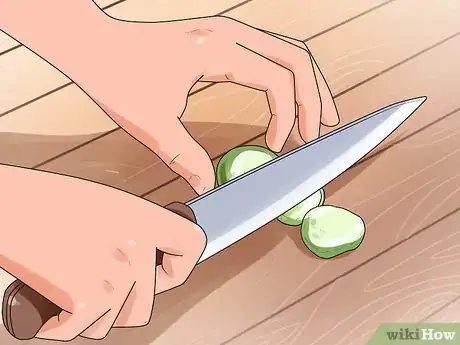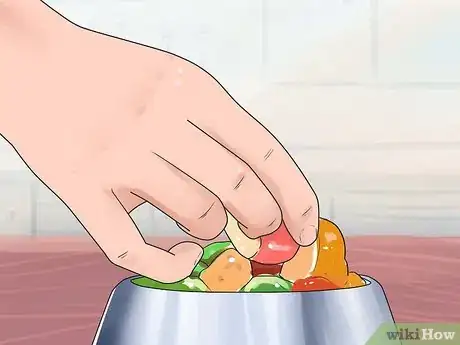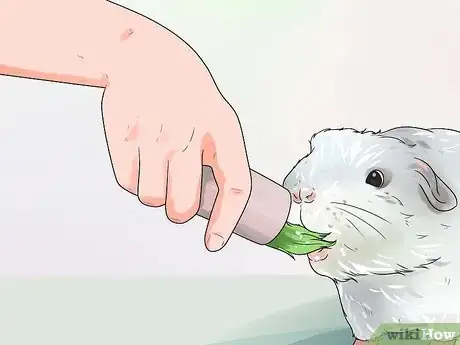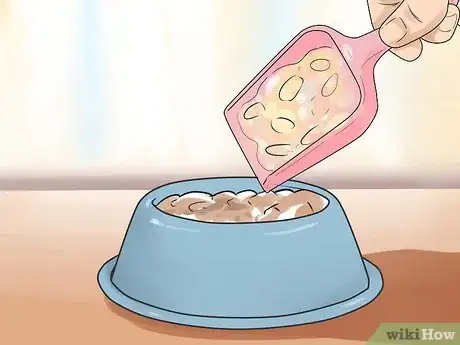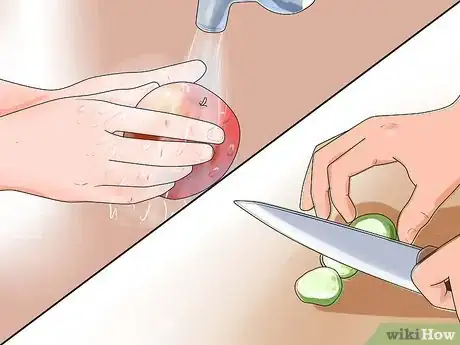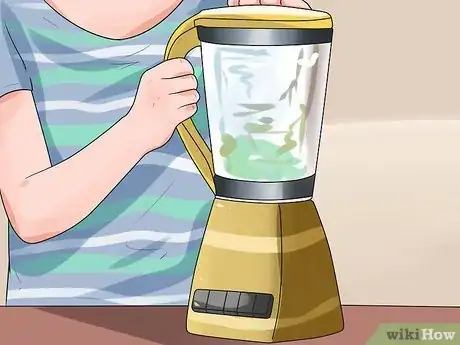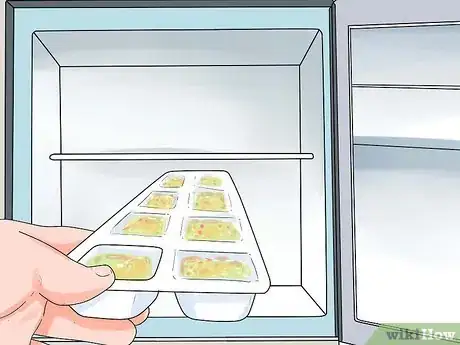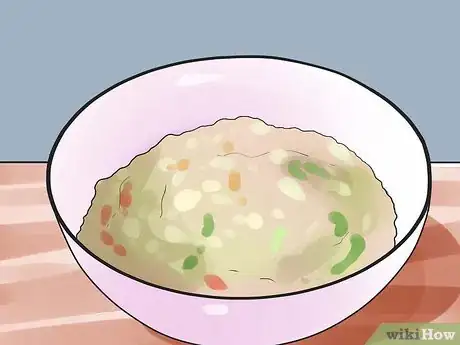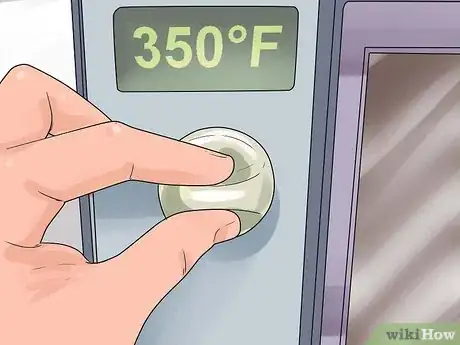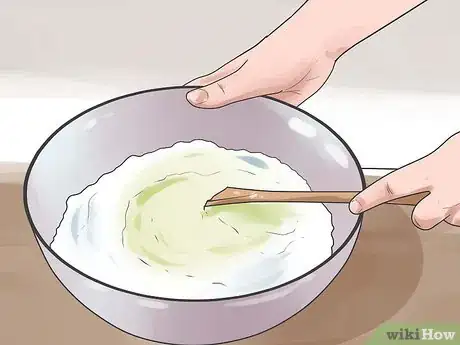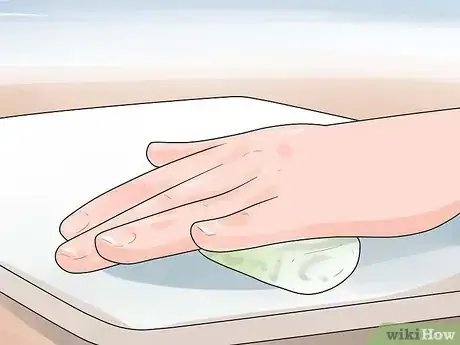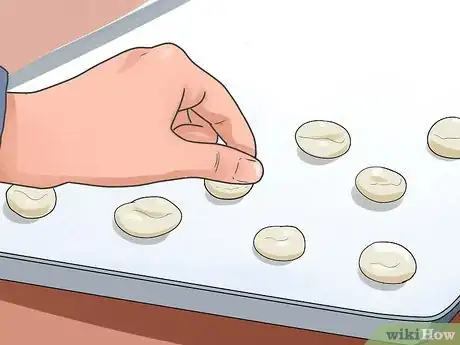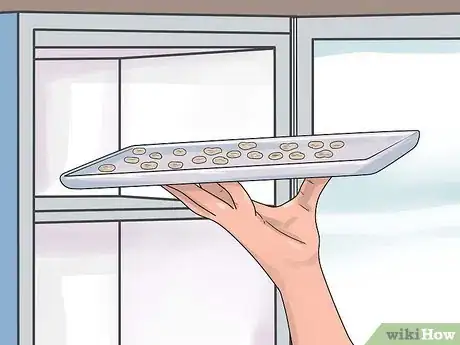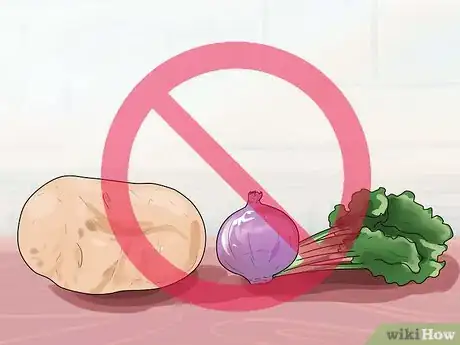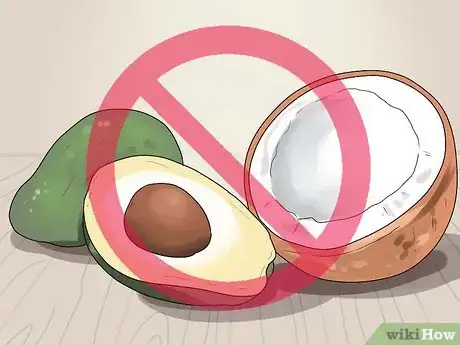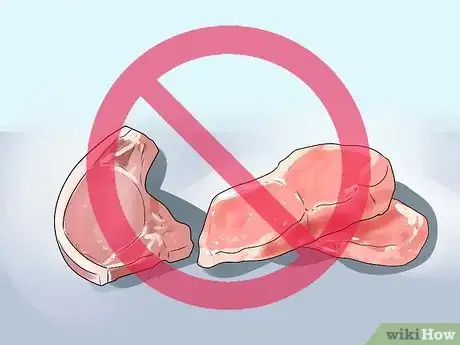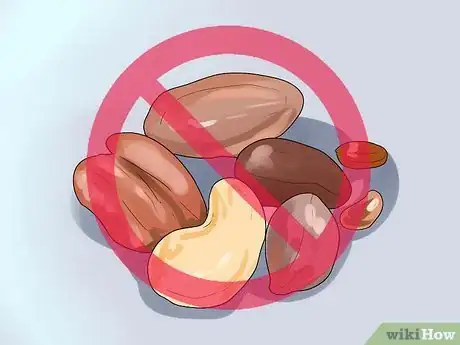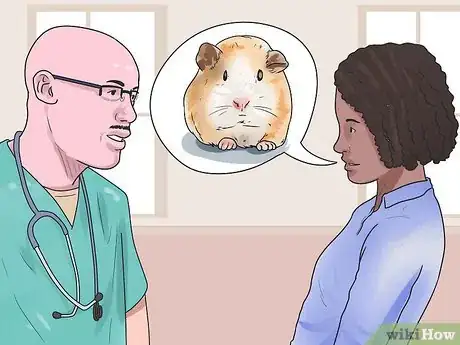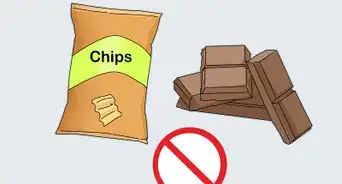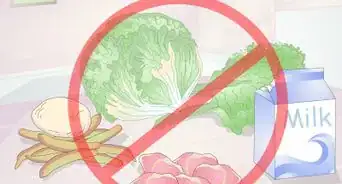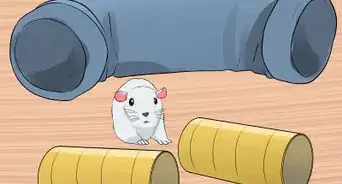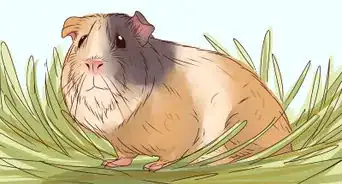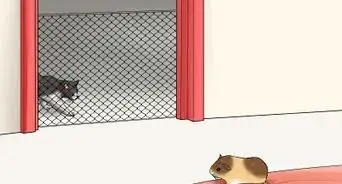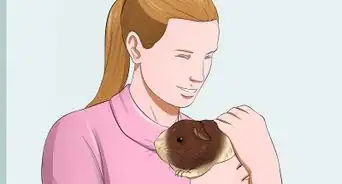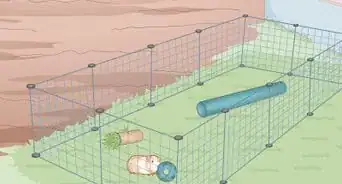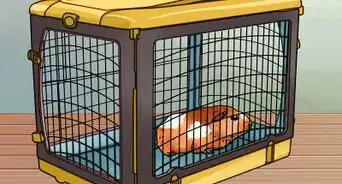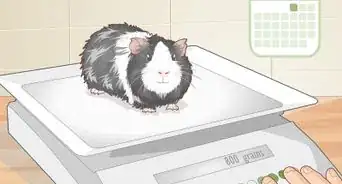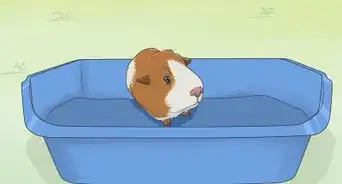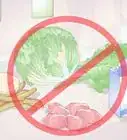This article was co-authored by Pippa Elliott, MRCVS. Dr. Elliott, BVMS, MRCVS is a veterinarian with over 30 years of experience in veterinary surgery and companion animal practice. She graduated from the University of Glasgow in 1987 with a degree in veterinary medicine and surgery. She has worked at the same animal clinic in her hometown for over 20 years.
There are 10 references cited in this article, which can be found at the bottom of the page.
wikiHow marks an article as reader-approved once it receives enough positive feedback. This article has 13 testimonials from our readers, earning it our reader-approved status.
This article has been viewed 117,634 times.
Guinea pig treats sold at pet stores often contain more fat, sugar, or other unhealthy ingredients than a guinea pig can safely eat. Some are even made from ingredients that guinea pigs can't digest, such as yogurt.[1] Guinea pigs do not have the same tastes or needs as humans, and they will go crazy over something as simple as daily treats of vegetables and/or fruits, as well as simple homemade treats.
Steps
Adding Variety to Your Guinea Pig's Diet
-
1Feed your guinea pig vegetables as treats. Though guineas should get vegetables every day, your guinea will likely see them as treats. They love digging into fresh vegetables.[2]
-
2Make greens the bulk of your guinea's diet. Romaine lettuce and spinach are a great base for your guinea's treat. Your guinea pig should have a cup of vegetables and fruit a day, and greens should make up most of that cup. Most days, it can just be greens.[3]Advertisement
-
3Add in other vegetables. You can add pieces of zucchini, parsley, and carrots as toppings. However, don't make them the bulk of their diet, and change up what you feed your guinea pig from day to day. Try to only feed other vegetables a couple of times a week. Any vegetable if feed to excess (every day) can potentially cause problems. For example, carrots are high in oxalate, which if fed daily can predispose the GP to develop oxalate bladder stones. A good rule of thumb is to never feed the same food two days running, which prevents mineral build-up.[4]
- You can also feed your guinea pig asparagus, basil, carrots with tops or without, celery, chicory, cilantro, eggplant, cucumber, dill, parsley, parsnips, radishes, rocket, bell peppers, turnips, tomatoes, and watercress. Remove seeds when possible.
- Skip rhubarb, potatoes, and tomato leaves completely, as they contain substances called alkaloids which are toxic to guinea pigs.
- Feed a limited number of vegetables in the cabbage family, such as cabbage, broccoli, Brussels sprouts, bok choy, and cauliflower, as it can cause your guinea pig to bloat. Only offer these once in a while in small amounts.[5]
-
4Limit fruit to a few times a week. While guinea pigs can eat fruit, they should only eat in small doses because of the high sugar content. You can feed your guinea pig a wide variety of fruits, but try to remove the seeds when possible.[6]
- You can feed your guinea pigs apples and pears in small slices (with peels), berries such as blueberries and blackberries, citrus fruits such as oranges and grapefruit, melons such as cantaloupe and watermelon, kiwi, mango, peaches, nectarines, and plums. Banana is also fine in limited amounts.[7]
- You can also give them dried fruits such as apricots and dates, but only give them in small pieces as they are high in sugar.[8]
-
5Satisfy your guinea's need for vitamin C. Guinea pigs cannot produce vitamin C on their own, so you need to provide it in their diet. You can give them a quarter of an orange, for instance, or add bell peppers or asparagus, though leafy greens also provide vitamin C.[9]
-
6Rinse all food thoroughly. Rub the fruits and vegetables under running water to remove bacteria, pesticides, and other harmful substances from the surface. To be safe, wash home-grown vegetables, as well, since car exhaust and other particles in the air can gather on vegetation.[10]
- Don't dry the food off. Leaving the water on it gives your guinea pig more fresh water.
- Greens don't need to be chopped. You can leave leaves whole, but pull them off the stalks. If you feed the stocks, you need to treat them as you do other vegetables by chopping them.
-
7Remove seeds. It's usually best to remove seeds from fruits and vegetables, as they aren't always good for your guinea pig. That includes tomatoes, cucumbers, bell peppers, and apples.[11]
-
8Chop vegetables and fruit into bite-sized pieces. Chop the treats into chunks to make them easier for guinea pigs to eat. This step is especially important for stringy vegetables such as celery; its stringiness can cause the guinea pig to choke if it's not small enough. Therefore, make sure you slice up celery small. For other vegetables, human-sized bites are fine, even slices of cucumber.[12]
- For extra fun, you can present it as a salad in a bowl.
-
9Remove any uneaten food. Uneaten food quickly spoils. Make sure to take it out of the cage after an hour so that your guinea pig won't get sick.[13]
-
10Make hay more interesting. Your guinea pig needs hay for digestion. However, to make it a bit more fun, you can stuff it in a cardboard toilet paper tube. Your guinea pig will have fun pulling out of the tube.[14]
-
11Add oats to pellets. You can also add a small scoop of rolled oats to their regular pellets. The oats make the food more interesting, and your guinea pigs will see it as a treat.[15]
Making Treats You Can Freeze
-
1Gather your ingredients. You'll need 2 carrots, 3 cucumbers, 1 wedge of apple (minus seeds), and 1 cup of water. You can leave the seeds in the cucumber.[16]
-
2Wash and slice the vegetables and fruit. Make sure you thoroughly wash the vegetation to remove any pesticides. Cut it into large chunks.[17]
-
3Blend the vegetables and fruit. Stick the chunks in a blender. Blend the mixture until it is smooth.[18]
-
4Freeze the treats. Pour the mixture into an ice tray. Make sure you cover it with plastic wrap before you freeze it. Once the treats are frozen, you can pop them out and put them in a plastic bag to freeze again.[19]
-
5Let the treat thaw in a bowl. The main purpose of freezing the treats is to preserve them. However, your guinea pig shouldn't eat the treat too cold, as it can hurt its teeth. It may also get an upset stomach. Let it thaw out at room temperature in a bowl until it isn't very cold.[20]
Making Baked Treats
-
1Gather your ingredients. You'll need 1 cup of oat flour, 1 cup of guinea pig pellets, 2/3 a cup of vegetable broth or water, 6 tablespoons of olive oil or vegetable oil, and 2 tablespoons of honey. Because these treats contain honey and oil, you should only give them occasionally.
- You can add other ingredients to this recipe, such as grated fresh vegetables. Carrots and parsley are good options or even spinach.
-
2Preheat the oven. Turn the oven on 350 degrees Fahrenheit. You want it to be ready once you're done mixing.
-
3Mix the ingredients. Stir until the mixture starts to form a dough. It needs to be solid enough to roll out.
-
4Roll out the dough. Once a dough has formed, roll out into a flat sheet. You can either use a knife to cut small squares, or you can use cookie cutters to cut small shapes. Just remember you want these treats to be fairly small.
-
5Put the treats on a baking sheet. Line a sheet pan with parchment paper. Lay the treats out, spaced slightly apart.
-
6Bake the treats. Put the treats in the oven. Leave them in there for 20 minutes, until they are solid. Turn off the oven, leaving the treats inside until the oven cools down.
-
7Freeze the treats. The best way to keep these treats is to freeze them. However, remember to let the treat come to room temperature before feeding it to your guinea pig.
Knowing What Foods to Skip
-
1Skip certain vegetables. As mentioned earlier, you shouldn't feed your guinea pig rhubarb, potatoes, and tomato leaves.[21] You should also skip hot peppers, mushrooms, onions, garlic, bok choy, and pickled vegetables. The salt content in pickled vegetables is very high.[22] Also, avoid iceberg lettuce, as it can upset their stomachs.[23]
-
2Don't offer them avocado or coconut. These food are too high in fat to make a good guinea pig treat. More importantly, avocado can be toxic to many pets, causing health problems or even death.[24]
-
3
-
4Don't feed them nuts and seeds. While guinea pigs may eat these and enjoy them, small sharp objects like this have the potential to cause cuts or choking hazards. A few small seeds mashed into a treat might be okay, but when in doubt, don't risk it. Always avoid seeds with the husk still attached, such as sunflower seeds.
-
5Always check with your vet if you're not sure. If you aren't sure whether a particular treat is good for your guinea pig or not, ask your vet. She can help you decide whether it is safe or not to feed it to your guinea pig.
Warnings
- Make a small quantity of a new treat, to begin with, in case your guinea pig doesn't like it. Also, too many new foods at once can cause an upset stomach.⧼thumbs_response⧽
References
- ↑ http://www.guinealynx.info/probiotics.html
- ↑ http://www.humanesociety.org/animals/guinea_pigs/tips/guinea_pig_feeding.html
- ↑ http://www.humanesociety.org/animals/guinea_pigs/tips/guinea_pig_feeding.html
- ↑ http://www.humanesociety.org/animals/guinea_pigs/tips/guinea_pig_feeding.html
- ↑ http://www.humanesociety.org/animals/guinea_pigs/tips/guinea_pig_food_choices.html?credit=web_id83480086
- ↑ http://www.guineapigmanual.com/guinea-pig-eating/
- ↑ http://www.guineapigmanual.com/guinea-pig-eating/
- ↑ http://www.guineapigmanual.com/guinea-pig-eating/
- ↑ https://www.aspca.org/pet-care/small-pet-care/guinea-pig-care
- ↑ http://jackiesguineapiggies.com/fruitandveg.html
- ↑ http://jackiesguineapiggies.com/fruitandveg.html
- ↑ http://jackiesguineapiggies.com/fruitandveg.html
- ↑ http://jackiesguineapiggies.com/fruitandveg.html
- ↑ http://www.humanesociety.org/animals/guinea_pigs/tips/guinea_pig_feeding.html
- ↑ http://www.humanesociety.org/animals/guinea_pigs/tips/guinea_pig_feeding.html
- ↑ http://ontariospca.ca/blog/diy-treats-for-small-pets/
- ↑ http://ontariospca.ca/blog/diy-treats-for-small-pets/
- ↑ http://ontariospca.ca/blog/diy-treats-for-small-pets/
- ↑ http://ontariospca.ca/blog/diy-treats-for-small-pets/
- ↑ http://ontariospca.ca/blog/diy-treats-for-small-pets/
- ↑ http://jackiesguineapiggies.com/fruitandveg.html
- ↑ http://www.guineapigmanual.com/guinea-pig-eating/
- ↑ http://jackiesguineapiggies.com/fruitandveg.html
- ↑ http://www.aspca.org/pet-care/animal-poison-control/people-foods-avoid-feeding-your-pets
- ↑ http://www.guineapigmanual.com/guinea-pig-eating/
- ↑ http://www.guinealynx.info/probiotics.html
About This Article
To make freezable guinea pig treats, start by slicing 2 carrots, 3 cucumbers, and 1 wedge of apple into large chunks. Next, add the chunks to a blender along with 1 cup of water and blend everything together until the mixture looks smooth. Then, pour the treat mixture into an ice tray, cover the tray with plastic wrap, and pop it into the freezer. Be sure to thaw the treats to room temperature before feeding them to your guinea pig! To learn about other foods you can use to make treats for your pet, read on!
